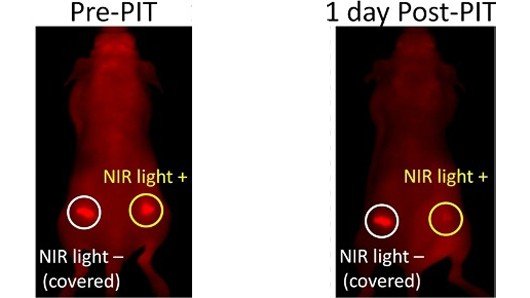The result is that only cancer cells are affected by the light-activation
Besides surgery, chemotherapy and radiation are the foundation of modern day cancer treatment. Although effective, these therapies often have debilitating and damaging side effects. But scientists at the National Cancer Institute (NCI) in Bethesda, Maryland have been experimenting with a new form of therapy using infrared light to kill cancer cells and shrink tumors without damaging healthy tissue.
The photoimmunotherapy (PIT) treatment works by combining cancer-specific antibodies with a fluorescent dye. A near infrared light is then administered which heats up the dye, burns a hole in the cancer cell is has attached to, and essentially kills it.
Scientists have targeted tumor cells in mice by using the antibodies that bind to proteins that are often over-expressed in cancers. The researchers specifically targeted HER2, a protein over-expressed by some breast cancers; EGFR, which is over-expressed by some lung, pancreatic, and colon cancers; and PSMA, which is over-expressed by prostate cancers.
“Normal cells may have a hundred copies of these antibodies, but cancer cells have millions of copies,” says Hisataka Kobayashi, chief scientist in Molecular Imaging at NCI. “That’s a big difference.” The result is that only cancer cells are affected by the light-activation, leaving surrounding tissue unharmed.
The dye used in the study also lights up allowing researchers to more easily monitor the treatment’s progress with fluorescence imaging. In the mice used in the study, the fluorescence visibly declined one day after a single treatment with the infrared light. The therapy has the potential to aid surgeons in future by helping to identify cancer cells that might remain after a tumor has been removed. “It could help clean up the tumor cells that are harder for surgeons to get to,” says Kobayashi.
Read more . . .
Bookmark this page for “light therapy” and check back regularly as these articles update on a very frequent basis. The view is set to “news”. Try clicking on “video” and “2” for more articles.








